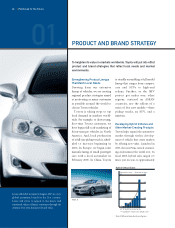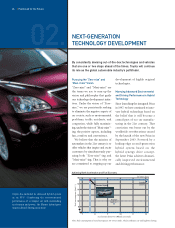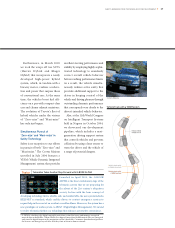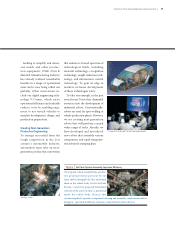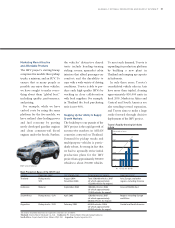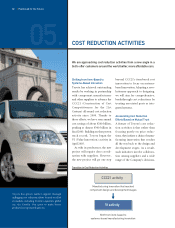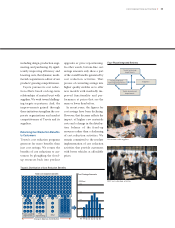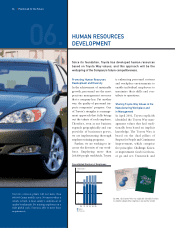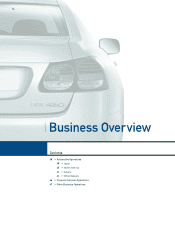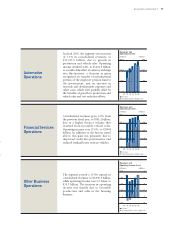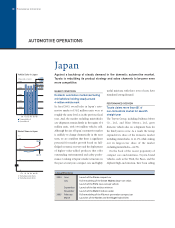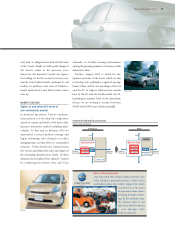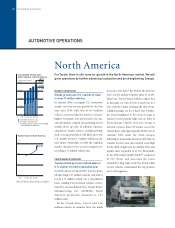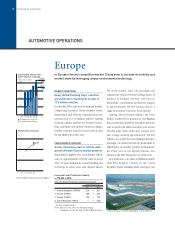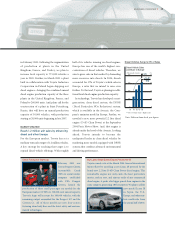Toyota 2005 Annual Report Download - page 36
Download and view the complete annual report
Please find page 36 of the 2005 Toyota annual report below. You can navigate through the pages in the report by either clicking on the pages listed below, or by using the keyword search tool below to find specific information within the annual report.
06.
34 >Positioned for the Future
Since its foundation, Toyota has developed human resources
based on Toyota Way values, and this approach will be the
wellspring of the Company’s future competitiveness.
HUMAN RESOURCES
DEVELOPMENT
is enhancing personnel systems
and workplace environments to
enable individual employees to
maximize their skills and con-
tribute to operations.
Sharing Toyota Way Values in the
Manufacturing Workplace and
in Management
In April 2001, Toyota explicitly
identified the Toyota Way man-
agement values that had tradi-
tionally been based on implicit
knowledge. The Toyota Way is
based on the dual pillars of
Respect for People and Continuous
Improvement, which comprise
five principles: Challenge; Kaizen,
or improvement; Genchi Genbutsu,
or go and see; Teamwork; and
Promoting Human Resources
Development and Diversity
In the achievement of sustainable
growth, personnel are the most
precious management resource
that a company has. Put another
way, the quality of personnel im-
pacts companies’ progress. One
of Toyota’s strengths is a manage-
ment approach that fully brings
out the talents of each employee.
Therefore, even as our business
expands geographically and our
portfolio of businesses grows,
we are implementing thorough
employee training programs.
Further, we are working to in-
crease the diversity of our work-
force. Employing more than
260,000 people worldwide, Toyota
Toyota’s overseas plants roll out more than
600,000 Camry models a year. No matter where a
vehicle is built, it must satisfy a uniform set of
quality benchmarks. By training employees on a
truly global scale, Toyota is able to meet those
requirements.
In 2001, the Toyota Way was explicitly identified so that
it could be adopted by employees around the world.
200
100
300
’01 ’02 ’03 ’04 ’05
0
FY
(Thousands)
Japan
Overseas
Consolidated Number of Employees


